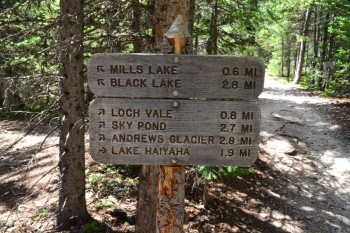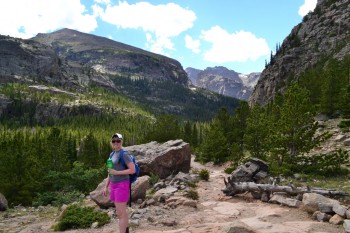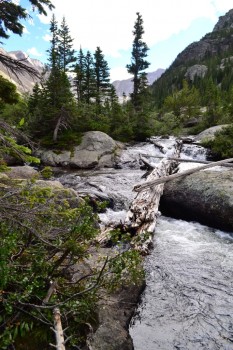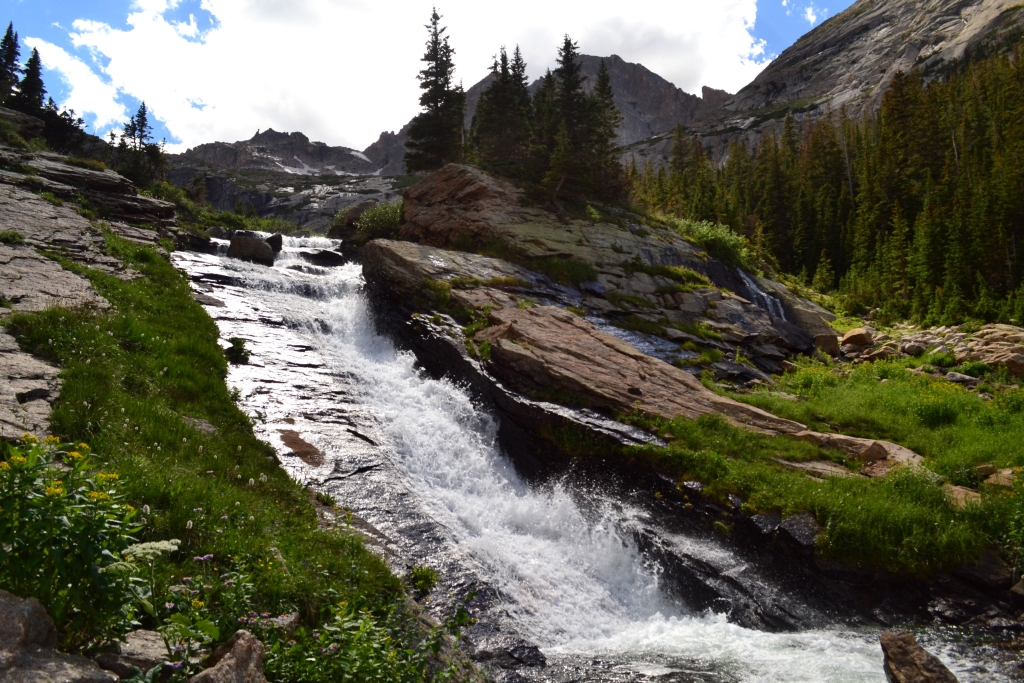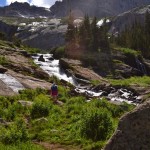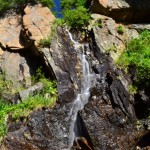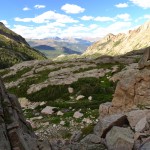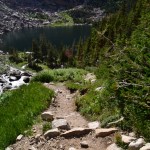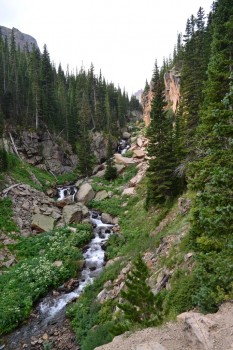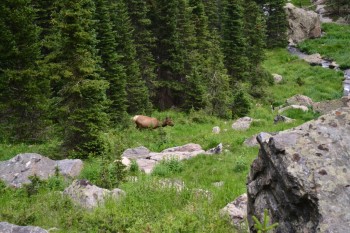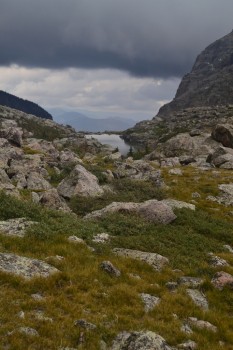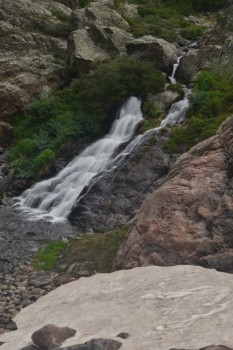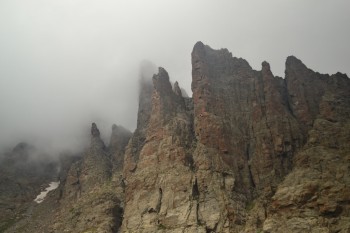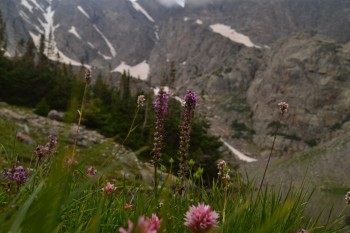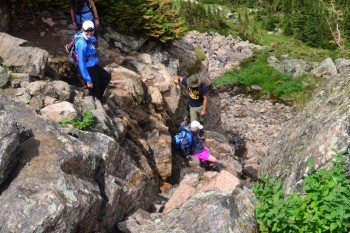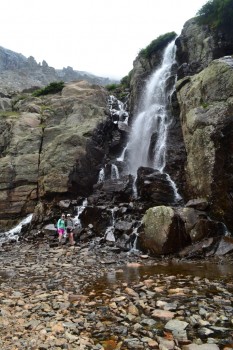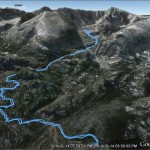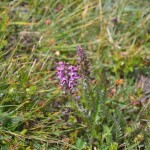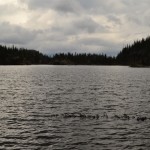Take a Walk
A Quest into the Wild
Interview with Terry Grosz

Interview with Terry Grosz
Written by Thomas Checkley
Terry Grosz is an award winning writer of 15 books and a legendary game warden. How we met and I ended up sitting on his porch interviewing him is a story unto itself. Last year I was in Bass Pro Shop here in Denver, Colorado, getting a headlamp for my wife. We became separated while heading up to the front of the store to check out and I became distracted by rows of booths set up near the cash registers. One of the booths was for a non-profit organization called Muley Fanatic Foundation (MFF), who are trying to help protect the Mule Deer populations of Wyoming and Colorado. A man named Scott was holding down the fort at that table and we talked a bit. I bought a raffle ticket and put my contact info in a jar for a chance to win tickets to a banquet they were hosting. Most importantly, Scott gave me a copy of Terry Grosz’s book No Safe Refuge.
I started to read No Safe Refuge and found the writing to be not only engaging but the material to be almost unbelievable. The book is a compilation of stories of the most atrocious killing sprees by poachers Terry saw over his long career as a game warden. His methods for dealing with these killers are almost as mystifying as the question of why these men and women (sometimes men of the cloth) were killing animals in such great numbers to begin with. As Terry told me, “If these people put as much energy into something positive as they did into breaking the law they could do amazing things.” But the book was about killing for killing’s sake, and it does a great job of illustrating the cold calculated killing American wildlife.
After reading the book Terry became an inspiration to me. His stories had sparked my imagination and shown me a world I didn’t realize existed. I thought it would be amazing to meet him, but didn’t give it much more thought than that. Then on a Saturday while Allyson and I were out at the store my phone rang with a number I didn’t recognize. I answered it, and on the other end of the line was Scott from MFF. He told me that a wealthy donor had given some tickets to the foundation so that interested parties could attend, and asked me if Allyson and I wanted to go. We said yes.
The banquet was a really nice event with music, speeches, a silent auction, many different raffles, and a live auction at the end. However, my greatest surprise was seeing Terry Grosz there signing books. I was frustrated with myself for not bringing my copy that Scott had given me, but went up to talk to him anyway. While speaking to him I asked if he would mind if I interviewed him for Take a Walk and he said sure thing. I found over the time I spent with him that he is a gracious and giving man who would do most anything to help not only other people but nature and the animals that call it home. And that is the story of how I ended up sitting on the porch with Terry Grosz in Evergreen, Colorado, watching birds, ground squirrels, and other creatures run around his front yard.
Now, Terry’s stories are already in his books. He has written thousands of pages of stories of his more than 30 year career in law enforcement as well as 5 books on the histories of mountain men. So when I went to meet with Terry I wanted to get to know how and why he wrote these stories down in the first place. What was his motivation? In the process I found out some incredible facts about his life, which I hope you enjoy reading about below.
In 1959 Terry graduated from High School, which was no small feat since he worked so much from a very early age. His first job was at the age of 9 as a grave digger. Multiple times he told me that he was terrified a hand was going to reach up from the dirt and grab him while he was digging graves! He worked through all of high school in various odd jobs and was logging by the age of 16 (he had to lie about his age to become a logger). But he had a revelation, he told me, while he was out in the forests looking around at the men surrounding him. He realized he wanted an education so he could do something different with his life than dig graves and log trees. He told me that “he didn’t know what an education was” but that he knew he needed it to do something more with his life.
But grades weren’t a strong suit for Terry in High School, mostly due to his focus on working. So when he went to look for universities to attend he realized he would need to go to a community college to get his GPA up before he could successfully apply to a 4-year university. Terry, a very focused and determined individual, did just this. He went to a local community college, did well, and ended up attending Humboldt University and graduated with a major in Wildlife Management. Little did Terry know that Humboldt University would award him with a Distinguished Alumni award in 2008 (his acceptance speech is on YouTube).
When I asked him how he chose Humboldt and the degree of Wildlife Management he told me a story. He said that while at community college in Santa Barbara, California, he went to the library to look at college brochures. When he walked in the library he found the brochure table, he picked one up, and that first brochure was for Humboldt University. Said to himself, “I’m going to go there.” Then he opened the brochure up and the first page it opened to was the major of Wildlife Management; he decided that was going to be his area of study. This sort of determination and decisiveness has been a theme in his life.
Terry told me that in eighth grade he saw a women come through the classroom door and he turned to his friend and told him, “I’m going to marry that girl.” His friend looked at him like he was crazy and told him that he didn’t even know who she was, so how could he know he was going to marry her. He told him, I don’t know how I know, but I’m going to marry her nevertheless. Over 50 years later, they are still married. His wife, Donna, is a school teacher with her B.A. and M.A. in Education. These stories of how he met his wife, how he decided to go into wildlife management, and how he decided to attend Humboldt University seem to be almost made up, but then again much of his life sounds sounds so fantastic that that it is hard to believe at times. In the end, the stories are so wonderful that even if they do have a little bit of a Big Fish aspect to them, we end up wanting to believe in them.
In his career he traveled not only the country but the world. He worked in California, Louisiana, Asia, and the mid-west just to name a few. The food in Louisiana was great he told me when I asked him about his experience there. “They can make anything taste good, even an old shoe,” he remarked when thinking back to his Louisiana days. That made Allyson smile when I told her, since her home-state is Louisiana. The stories he told me were wild. Involving shootouts in Asia, close encounters with rattlesnakes, brawls with poachers, and more. It’s no wonder they made a TV movie about him! But I wanted to know how and why he wrote, so you’ll have to go buy his books to read more about his stories.
One of the downfalls of his epic career as a protector of nature was that he didn’t have much time for his family. He called his career a “vision quest.” That he felt compelled to protect nature in a way that went above and beyond duty, but was elevated to an almost religious status. Because of this he spent 12 hour, 18 hour, 48 hour shifts trying to catch poachers and rule breakers, often missing out on events with his wife and children.
When he retired he started a daily ritual of hiking up a hill just outside his house. I looked at the hill he pointed to and it looked very serene and like a good place to think, and think he did. He went over his career in his head and then, back at the house, felt compelled again to write down these stories. Terry told me that they were originally intended for his family, “so that they could know about what he did and who he was.” But like most things, when he began something he was all in, and in very short order a 400 page manuscript of wildlife stories emerged.
He sent the manuscript around and it was eventually published. His family decided that the profits would go to a charity, but wasn’t sure which one. Terry told me that one day he was watching TV, and a commercial for Saint Jude’s came on. He knew in that instant that St. Jude’s was the charity that the money was meant to go to. Ever since, every dime according to Terry has gone to St. Jude’s Children Fund. What followed after that was a parade of more books and awards. His books became extremely well known in Sportsman and Wilderness communities; and he has had notable individuals such as General Schwarzkopf call his house and ask for books for gifts (70 books in General Schwarzkopf’s case). As it turns out, General Schwarzkopf is a big wildlife buff and loves big game — especially grizzlies.
As we continued to sit there we started to talk about the birds Terry was feeding. A stellar jay flew in and scarred off many of the smaller chickadees and ring-neck doves; I tried to get a few pictures of the jay, but couldn’t really get a good angle. Terry told me he loved birds, loved studying them in college. When I asked him why he told me that they had such amazing physiology. I asked him what his favorite bird or even animal was and he told me that it would have to be the Golden Eagle. This bird can reach speeds of up to 200 mph, quite the flier!
We talked a bit more about our favorite things, and Terry told me he had a fondness for geraniums, because they let you know if you piss them off; and that he loved Salmon, because they had this knack for overcoming obstacles to survive. This seemed to resonate deeply with Terry, and you can see it in his stories. The willingness and depth of Mr. Grosz’s actions to stop poachers and harmers to nature are legend. You can still see how strong and intimidating he must have been as a younger man, a lingering effect most likely of logging and digging graves starting at an early age.
Today Terry continues to write and still takes walks near his home in Evergreen, Colorado. The following link to his first book can be found here to get a feel for his writing. His books can be purchased from amazon.com, alibris.com, or almost any other seller.
Cheers,
Thomas
Mills Lake and Black Lake: RMNP

Distance: 10.6 miles (out and back and exploration)
Elevation Gain: 2,367 ft (total gain) Max Elevation: 11,007 ft Min. Elevation: 9,224 ft
The map on the left is our route from TH to Black Lake. The map on the right shows our route past Black Lake and displays relative locations of Green Lake and Frozen Lake with respect to the waterfall and The infamous Spearhead.
Rocky Mountain National Park is the quintessential mountain playground of the summer. After just renewing our annual RMNP park pass for the year, we couldn’t resist spending our second weekend in a row at adventureland. The work week had taken quite a bit out of us so we lounged around in the morning longer than usual for a Saturday and then hit the road about 10:00 am. The forecast called for perfect weather, and our planned hike would keep us under treeline for the majority of the day just in case a sneaky thunderstorm came through. Traffic proved to be very difficult in getting to the park. When we finally approached the Beaver Meadows entrance station, there was a long line of cars waiting to pay and get in. Luckily, they have an express lane for pass-holders, in which a quick swipe of a card allows access of the park and hence, no waiting in line. We breezed through. As we drove toward Glacier Gorge TH and Bear Lake, numerous signs said all parking lots were full (even shuttle routes) and to turn around and come back after 2:00 pm. We continued on to Bear Lake anyways, and for the second time in a week we got lucky. Someone was leaving as we pulled up, and we got a spot! If you plan to go to Rocky Mountain National Park in late July or August on a weekend, be prepared for this craziness. Ideally, you should arrive at the park around 8:00 am or earlier to secure a spot or a least by 10:00 am to get a spot in the shuttle lot. We really just took our chances. (Wild Basin fills up by 7:30-8:30 am most summer weekends and there is no shuttle service).
We quickly set off on the trail that heads to Alberta Falls in order to connect up with the trail to take us towards Mills and Black Lakes. Thus, the first portion of this hike was a repeater from last weekend (the normal trailhead is the Glacier Gorge Trailhead, but the Glacier Gorge parking lot is small and there was no chance of parking there). We powered through the first two miles of the trail, averaging 15 min. miles mostly uphill. Quickly we reached the trail junction that splits, optioning this time for the southeast trail towards these new lakes. Seen below are overlooks, waterfalls, and foot bridges that led us to Mills Lake.
Mills lake is about 2.8 miles from Glacier Gorge TH but we started at Bear Lake which made the distance about 3 miles. It feels like a very quick hike with all the visual delights along the way. The only downside was people dodging until we reached the trail junction. After this point, the trail thinned out a bit, and we very quickly reached Mills Lake. It was a fabulous lake to visit, and we were quite surprised we had not made an effort to get here before (the lake is almost half a mile long). Interestingly, Mills Lake is named after Enos Mills, “the father of Rocky Mountain National Park.” He spent years lobbying Congress to help create this park in 1915. In addition, this September begins the 100 year anniversary celebration of the park. All year long there will be special events and programs commemorating RMNP. The trail turns to granite slab as it reaches the lake and disappears for a moment. It then reappears and skirts the eastern shoreline, providing many adequate spots along the way to set up a picnic on rocky outcroppings. We paused for a moment to relax. Chipmunk friends quickly came over to scope the area and our bags for food. Unfortunately, two hikers near us thought it would be a good idea to feed the critters. This resulted in one member of the party subsequently getting bitten by the “cute” rodent. Working with rodents had already taught this lesson for our group. Needless to say, don’t feed the wildlife. Seen below are photographs of Mills Lake with the majestic cirque off in the background; a preview of where we were heading. The peaks in the background are Chiefs Head, Pagoda and Thatchtop Peaks.
As you continue on along Mills Lake it eventually thins, disappears, and then a smaller lake, Jewel Lake, appears. The trail continues to follow close to the shoreline of Jewel Lake. Everything is so green in the area in August. Plants and flowers are abundant. Several wooden planks connect on the trail, elevating hikers a few feet above a green marsh. We weren’t touched by mud here, but the vibrant blue and yellow flowers dusted our sleeves as we walked by. If only words or still images could truly capture the moment. It is a hope and dream of ours and mission of this site that everyone makes the effort to go out and have these experiences outdoors. We continued to follow Glacier Creek fairly closely on the trail and steadily gained elevation (well sometimes not so steadily). After about 4.8 miles, we reached the amazingly beautiful Ribbon Falls which spills from Black Lake. Seen below are photos of Glacier Creek and the Falls. Notice what a great slip n slide Ribbon Falls would make…
A series of rocky steps on her eastern side led us upward until we reached a small boulder field and the first signs of Black Lake. A few skips and hops over and we were at her northeast bank. The water was a dark green matching the name quite well. We sat on a rock and admired the trout splashing around. Unfortunately mosquitos the size of dragonflys began to attack, and we had to get on the move again. Seen below is a pano from the shores of Black Lake.
We then headed east and followed the trail into a thick forest. It quickly opens up and heads sharply east and up along side Black Lake’s primary inlet. The trail here is very uneven and abundant in loose rock. It climbs straight up until opening up to wild tundra and several unmaintained routes leading various ways to Green Lake, Frozen Lake or many of the surrounding peaks. Since we got such a late start, we didn’t continue on to Frozen Lake and simply used our time here to explore and scramble a little on some nearby rock. We crossed the creek and headed south. Seen below are photos looking back down at Black Lake and of our exploration.
With the sun giving the first hints of retiring, we reluctantly turned around and headed back down the gully and the route upon which we came. The area has some excellent off trail routes to explore and nice climbing options. We can’t wait to come back here with more time. The trip back was relatively quiet and calm. Mills Lake was still and peaceful as we enjoyed water and a snack on her rocky bank. We reached the car famished and ready for dinner. The night concluded with a delicious Mexican Dinner in Estes Park and a little window shopping.
Side notes, stories and closing remarks from this hike:
1. During the hike, a funny remark from an older hiking couple on the trail encouraged and resulted in our record speeds reaching and returning from Black Lake. Just past Jewel Lake, a lady says “I wouldn’t go further if I were you! It’s only one more mile, but it took us an hour to get here and that’s going down!” We politely asked what was wrong with the trail and why we shouldn’t continue. She looked flustered and said that it was simply a rough trail and to think hard before continuing. She shook her head at us as we continued on anyway. Well, the trail isn’t a perfectly smooth path, but it was pretty good in our opinion. There were some steep sections, some roots, and mud in areas but nothing out of the ordinary. From that point, we made it to the Lake in about 32 min. 😉 We got all the way back to Mills lake in about 45 mins. Just for completeness, it took 1 hour and 57 minutes to get from Black Lake to Bear Lake (but that was us). So, take others advice on the trail with a grain of salt, know your own abilities and be confident in them. It would have been a shame not to see the gorgeous lake and cirque.
2. Get an early start so you won’t be disappointed when you don’t have enough time to get to Frozen Lake or climb more. Also, bring a helmet. Unfortunately, we didn’t have our helmets, thus we didn’t feel comfortable completing a couple of moves with loose rock around.
3. Bring some bugspray. The mosquitos were huge and scary at Black Lake.
Cheers,
Allyson & Thomas
Sky Pond and more: RMNP

Distance: 9.73 miles (out and back) Elevation Gain: 2,405 ft (total gain)
Max Elevation: 11,926 ft Min. Elevation: 9,212 ft
Last summer we enjoyed a nice, long hike that led us to stops at Nymph Lake, Dream Lake, Lake Haiyaha, The Loch, Timberline Falls, Alberta Falls, and Bear Lake, all spectacular highlights showcasing the many wonders of Rocky Mountain National Park. The link to that hike from 2013 can be found HERE. Unfortunately, last year our hike was cut a little short due to a sudden and dangerous downpour of rain and hail at Timberline Falls, and we weren’t able to see Lake of Glass and Sky Pond, with the daunting Sharkstooth in the backdrop. With hiking season in full bloom, we headed up yesterday to Rocky Mountain National Park to complete this portion of the hike and stand at the rocky banks of the wondrous pond in the sky. We brought our good friend Liz along; the views are so spectacular on this hike that it would be selfish not to share.
Since we had already completed the lollipop loop last time to see many of the other lakes, and Liz had seen them already too, we opted to jump onto the Alberta Falls Trail. This well groomed wooded trail immediately drops down into a valley. It winds through a pine forest and a few large aspen groves before flattening out for a brief moment to cross Chaos Creek. Once past the creek the climb starts along a ridgeline with Glacier Creek to the left, but a quick reward awaits hikers in the form of Alberta Falls. The powerful waterfalls are a really cool sight and extremely popular due to their close proximity to the trailhead (~0.9 miles from trailhead). We paused a few moments to enjoy the sounds and sights of the rushing water. Below are pictures of the fork at the trailhead, images of the hike to Alberta, and an image of Alberta Falls.
Past Alberta Falls, the well-groomed trail continues to climb through more pine forests occasionally opening up to scenic views of Glacier Gorge. As we continued to hike, we followed Glacier Creek until it creates a fork with the Icy Brook. The pleasant sounds of rushing water or simply a gurgling brook traveled with us for most of the journey. It is amazing to think that these valleys where creeks and streams now flow were once massive glaciers. At Icy Brook, we headed up steep switchbacks and followed the Brook toward The Loch, a famous RMNP landmark. Below are a of couple images from that section of the hike and a map for reference (with starting and ending points noted along with the route in red).
Once we arrived at The Loch, (~3.3 from trailhead), we took a short snack break enjoying the serenity of the calm lake. We sat down near a couple of anglers and saw healthy amounts of trout in the water which made us really wish we had carried some fishing gear along. While we were eating, an extremely bold chipmunk approached Liz and climbed on her shoe. It then proceeded to climb onto the rock where we were sitting and subsequently onto her pack. It was a very cute little critter, and we kept trying to explain to him that it is illegal to feed wild animals, but he just didn’t seem to get it and kept looking at us all cute like. Below are some images from The Loch and of our chipmunk friend.
After we successfully ate our snacks, we headed up and over to Timberline Falls. Lush green grass and wildflowers line the gorgeous route. After a creek crossing, the trail splits. The path heading west (right) leads to Andrew’s Glacier. The original path leads to Timberline Falls. In the last mile to the falls, a series of boards connected to one another provides a dry crossing of a small alpine valley pond. The hike from The Loch to Timberline Falls is quite easy with very moderate elevation gain until tree-line. A short, steep climb takes hikers on the final push to the falls. Just as we were coming out of tree-line we saw two elk eating grass just off the trail, so we stopped for a moment to admire them.
The first part of this section of the hike is groomed trail, but then it becomes something akin to a staircase. Just before the falls, the trail fades away and a bed of rocks is the only route in which to take towards the rumbling falls. A small wooden sign labeled Sky Pond with an arrow is the only acknowledgment that the path does in fact lead up and over the rushing water. Water is constantly spraying from the falls and running down and over the bed of rocks, making good footing and stability essential to maintain balance. Below is a panorama of Timberline Falls and some shots of the hike up to it from The Loch.
After pausing at the falls, we were now excited to tackle the short class 3 route up and over the waterfall. The route up is relatively clear to pick out just to the right of the waterfall. The biggest challenge is finding dry rock to make stable moves. If not confident in scrambling ability, then don’t attempt it. The scramble is only about 0.1 miles long, but can be challenging for some. After this short, fun climbing section, we popped up and over the falls and were immediately greeted by the Lake of Glass. Pictures of our climb up and of the Lake of Glass are below.
The trail continues on towards Sky Pond, which is about 0.5 miles away from Lake of Glass. This trail passes over grass, rocks and boulders disappearing and reappearing as the terrain changes. There is some minor exposure at times and some opportunities for practicing scrambling, but all avoidable. It’s almost impossible to capture the wonder, mystery and beauty of the area above Timberline Falls. We each enjoyed our time here in a different way. Liz, serenely gazed at the glassy water (probably contemplating her next scramble or climbing move). Allyson “frolicked” from rock to rock. Photos below can only partially portray the beauty of what we were surrounded by.
Sky Pond is truly a stunning sight. The “pond” is actually more of a lake and surrounded by jagged peaks. The gnarly Sharkstooth provides a powerful backdrop on the northwest side of the lake. There are many options for exploration around the lake. Heading northwest towards the Sharkstooth, rock overhangs and a small cave provide shelter. Heading southwest (left) across Icy Brook allows exploration of some hills, and there are nice spots to set up lunch as well. Unfortunately, without ropes and climbing gear, it is tough to circumnavigate the lake safely.
When we were climbing up to Sky Pond, the sun had come out on what had turned into a cloudy day. Unfortunately, once we reached Sky Pond clouds came over the Continental Divide and a storm rolled through. It began to rain just as we reached the lake so we headed for cover, and took that opportunity to eat lunch. In fact, our cave was so nice a little mouse came to hang out in there too. There was some ferocious thunder, made scarier by the fact that we were essentially surrounded by large walls of rock creating an amphitheater that reflected the sound back and forth and around us (technically we were in a cirque). We hunkered down for about 10 or 15 minutes until the storm passed and the sun came back out — that’s mountain weather for you during rocky mountain “Monsoon Season.” During July and August, the mountains typically get an afternoon thunderstorm every single day. Another reminder that starting early is the best bet for a safe climb or hike but still no guarantee (we started early and were still stuck in a storm).
Once the storm had passed through we headed around to the other side of the lake to get the famous view of Sky Pond with the Sharkstooth in the background. It is an easy hike to get mostly around the lake, but it does add about 0.4 miles to the total trip distance. However, it is worth it. Clouds still lingered in the Sharkstooth and gave it an ominous and almost devilish appearance. On good days this rock feature is great class 5 climbing (or so we hear). Below are images from the jaunt around Sky Pond and a video we made at Lake of Glass just as we started to head back.
We were wary that another storm might roll through, so we decided it was time to head down. We hiked back through the alpine and sub-alpine scenery until we reached the scramble. It was crowded here, and we ran into a few larger groups, some coming up and some going down. We managed to get down just fine, but unfortunately, the wet rocks caused an accident for another party.
I (Thomas) was taking pictures of Allyson and Liz down climbing and ended up behind a group of 5. This was fine with me since I had a great view and was in an incredible mood from great company and beautiful nature. So while I was sitting on a ledge watching their group climb down I saw one of their party take a vicious fall. The climber fell backwards, tumbled, and I saw the back of their head hit a rock. I climbed down very quickly to get to them and respond.
The fallen climber was quite naturally a bit shaken up and felt faint and had a nice cut on the back of the head. But the bleeding stopped and somehow there didn’t appear to be any broken bones or severely sprained joints. Just a really bruised up hip and a bump to the head. After resting for a little bit and getting a little cleaned up, the climber was able to stand and hike out of their own power. Although the climber will almost certainly be very sore, they appear to have been very lucky. This climber assured us that they are going to be checked out by a doctor when they get back into town, which is the smart thing to do.
This was a humbling moment on our hike and indeed in our hiking history. The fall that the climber took could have happened to anyone. It could have easily been far worse, resulting in a broken bone, severely sprained ankle, or concussion. The incident is a reminder to take safety seriously. Had she been wearing a climbing helmet she likely would not have cut her head, and it would have minimized the risk of concussion. Although, no one, including none of our party, were wearing climbing helmets. Carrying a helment for 0.2 miles of scrambling in a 10 mile hike is hard to make oneself do.
The incident also displayed the camaraderie of hikers. We responded as did other groups to the injury. Between all of us we had a physician, an RN, a Red Cross professional rescuer, and some good Samaritans! Quite a response, it would probably take hours in an ER to get anything close to that!
After the climber was able to get up we helped her down the rest of the way and said goodbyes. Our party stayed at Timberline Falls a little bit longer and took some group pictures, which are below.
After we finished taking pictures, we hiked down and out relatively quickly. Though, the sights and sounds of Icy Brook and The Loch ever so often drew us back in for a few moments of serenity. We were rained on once more on the way back but nothing too extreme. When we reached the car, we were thrilled to throw on our Tevas, Keens, etc. and give our feet a rest. The hike was successful, and we highly recommend it. While a great workout, it was a nice break from some of the strenuous mountain climbs we have been doing recently. On the way back we stopped for cherry pie, and some delicious Oskar Blues food and brew. Until next time…hike on!
-Cheers!
Allyson & Thomas



